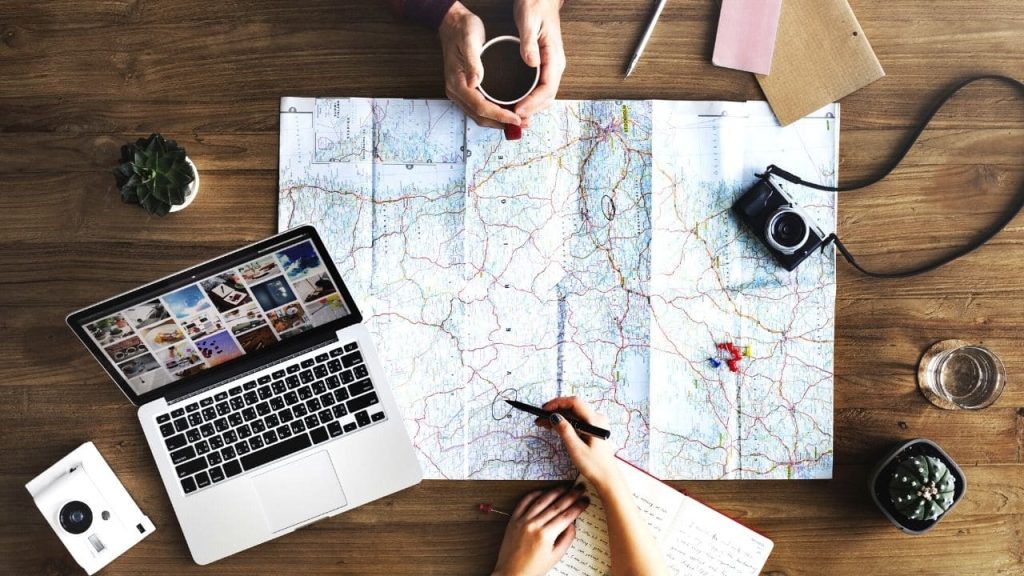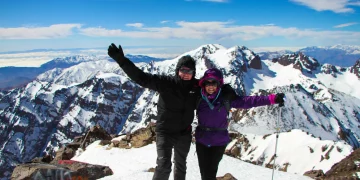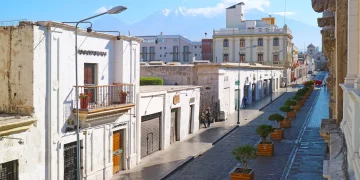The Importance of a Well-Rounded Travel Itinerary
Creating the perfect travel itinerary can be one of the most rewarding aspects of planning a trip. While some might argue that the best way to travel is to leave everything up to spontaneity, crafting a balanced and well-thought-out itinerary is crucial for maximizing your experience. A great itinerary not only ensures you cover all the must-see sights but also gives you room to engage with local culture, explore hidden gems, and connect with nature.
For many travelers, the primary objective is to craft an itinerary that strikes the right balance between different elements: cultural immersion, the exploration of natural wonders, and participation in the daily life of locals. By including these core components, you will create a truly immersive travel experience. An itinerary that incorporates these aspects is not just about checking off landmarks on a map—it’s about embracing the essence of a destination, understanding its history, and appreciating the landscape while engaging with its people.
When planning your travels, it’s easy to get carried away with the idea of seeing as much as possible in a short period of time. However, without proper planning, the result can be a rushed, overwhelming experience rather than an enjoyable and enriching adventure. A well-balanced itinerary, on the other hand, ensures you get the best of both worlds: the excitement of exploring a new destination and the opportunity to slow down, soak in the surroundings, and build meaningful experiences.
Ultimately, the perfect itinerary doesn’t mean cramming every single sight or activity into your schedule. It’s about creating a meaningful experience that allows you to immerse yourself in the culture, appreciate nature, and get to know the local life.
Planning Your Itinerary to Include Cultural Activities, Natural Wonders, and Local Experiences
When crafting an itinerary that blends culture, nature, and local life, it’s essential to plan a few key components that will form the foundation of your trip. The goal is to strike a balance that allows you to experience each of these areas in a way that feels natural and fulfilling. Here are some steps to help you structure your trip:
- Incorporate Cultural Activities
Every destination has its own unique cultural aspects—historical landmarks, traditional festivals, and authentic local experiences—that are worth including in your itinerary. These activities give you an opportunity to engage with the heritage and history of the place. Visiting a museum, exploring ancient ruins, attending a local performance, or visiting a sacred site can provide profound insights into a destination’s past and present.
Consider the arts, architecture, and traditions that define the destination. In Paris, for instance, you may want to explore the Louvre and take a walk along the Seine to appreciate the city’s artistic history, whereas in Tokyo, you could visit shrines and experience a tea ceremony to engage with the country’s long-standing traditions. Make sure to include a variety of cultural experiences, such as:
- Exploring historical sites like castles, ancient towns, and monuments
- Visiting art museums or local galleries
- Participating in a local cooking class or food tour to learn about traditional cuisines
- Attending a local festival, performance, or concert
By participating in these cultural activities, you will not only gain a deeper understanding of the place you’re visiting but also make your trip more enriching.
- Explore Natural Wonders
The natural landscapes of a region are often what draw travelers to a destination. Whether it’s a majestic mountain range, sprawling desert, pristine beach, or lush rainforest, connecting with nature is an essential part of any travel experience. The right itinerary should include visits to these iconic natural landmarks, but it’s also important to seek out hidden gems that are less touristy.
Incorporating nature into your itinerary allows you to disconnect from the hustle and bustle of everyday life and reconnect with the environment. Hiking through the Swiss Alps, visiting the volcanic islands of Indonesia, or exploring the waterfalls in Costa Rica are just a few examples of how nature can transform your travel experience.
When planning your itinerary, ensure you:
- Set aside time for outdoor activities like hiking, kayaking, or wildlife watching
- Research national parks, nature reserves, and ecological sites that are important to the destination
- Include a day or two of downtime where you can simply relax in a scenic area, whether that’s lounging by a beach or soaking in a natural hot spring
Allowing time to explore the natural beauty of the destination will help you recharge and get a deeper appreciation for the environment.

- Include Local Experiences
The most authentic travel experiences come from immersing yourself in the daily life of locals. While famous landmarks and attractions are important, there’s something special about the quiet moments spent in local markets, small cafés, and community events. A great itinerary includes opportunities to interact with the local population, taste regional dishes, shop at open-air markets, and participate in activities that connect you with the people of the place.
A few ways to incorporate local experiences include:
- Visiting local markets, where you can interact with artisans and buy handcrafted goods
- Enjoying street food or dining at family-owned restaurants to taste authentic dishes
- Exploring neighborhoods that are off the beaten path, where locals live and work
- Taking part in community festivals, parades, or celebrations to feel the pulse of the culture
The best part of these experiences is that they can’t always be planned or predicted. They often come from conversations with locals or random discoveries along the way. Allowing some flexibility in your itinerary will open up opportunities for these enriching interactions.
Real-Life Examples from Seasoned Travelers on Balancing These Elements
One of the best ways to understand how to balance cultural activities, nature, and local life is to look at real-life examples from experienced travelers. Each traveler’s journey is unique, and their methods for finding balance often offer valuable insights.
For example, Amelia, a solo traveler, emphasizes the importance of planning days that are focused on a particular theme. “When I went to Italy, I focused on one day for culture—visiting museums and historical sites—and another day for nature, where I went hiking in the Dolomites,” she recalls. “I always included some free time to wander around small towns and have coffee with locals. It was the perfect balance.”
Similarly, Mark, a travel blogger who focuses on sustainable tourism, shares how his trips to South America have often revolved around outdoor activities and local interactions. “I always make sure to include both eco-friendly activities—like hiking through the Amazon or exploring Patagonia—and meaningful cultural exchanges, like staying in a homestay or volunteering with a local community,” he advises. “This blend gives me the best of both worlds: nature and culture.”
How to Stay Flexible While on the Road
While having a well-planned itinerary is important, flexibility is equally crucial. Traveling is often unpredictable, and unforeseen circumstances—such as weather delays, transportation issues, or spontaneous recommendations from locals—can change your plans. Staying flexible allows you to adjust to new opportunities or challenges that may arise during your travels.
To maintain a flexible itinerary, here are some practical tips:
- Leave Room for Spontaneity: Instead of packing every day with pre-arranged activities, leave one or two days with minimal plans. This gives you the freedom to explore local recommendations or take a day off to rest.
- Use Technology: Mobile apps like Google Maps and TripIt can help you stay on top of last-minute changes in your travel plans.
- Be Open to Recommendations: Talk to locals, fellow travelers, and hotel staff. They can often recommend hidden gems or provide insight into events and festivals you might not have found in your guidebook.
- Don’t Stress About Missing Some Things: If you miss a specific sight or activity, don’t worry. The essence of travel lies in being open to new experiences, not just checking things off a list.
Tips for Adjusting Your Itinerary Based on Local Recommendations
One of the best ways to enrich your travel experience is to adapt your itinerary based on local insights. Locals often know the best spots to visit, the least crowded times to go, and hidden gems that tourists may not be aware of.
Here are some tips for adjusting your itinerary based on local recommendations:
- Ask Locals for Suggestions: Whether it’s a hotel staff member, a taxi driver, or someone you meet in a café, ask locals where they recommend going. Their advice often leads to authentic experiences.
- Use Social Media and Blogs: Search for recent posts, reviews, and recommendations from travelers who are currently in the area. Platforms like Instagram and travel blogs are great for uncovering current events or festivals.
- Follow the Crowd: If you find that a particular destination or event is swarming with tourists, try exploring nearby places that locals might visit instead.
Conclusion
Crafting the perfect travel itinerary involves more than just scheduling popular tourist sites. A great itinerary incorporates cultural activities, natural wonders, and local experiences in a way that is balanced, flexible, and authentic. By learning from seasoned travelers, understanding how to stay flexible on the road, and adjusting your plans based on local recommendations, you’ll craft a travel experience that is truly unforgettable. Ultimately, the best itinerary is one that embraces both the well-known and the hidden, the planned and the spontaneous, offering a rich blend of culture, nature, and local life.





















